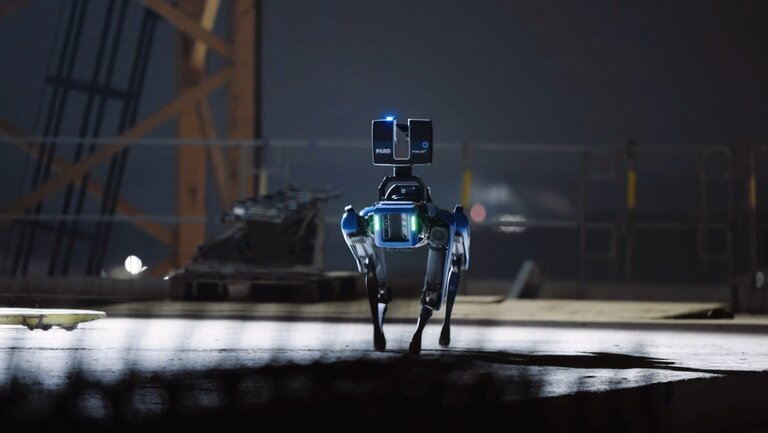Stuttgart, Germany, August 5, 2022. It does not bark, does not bite, has six eyes and an electric motor in its belly: Spot is a dog-like robot with a lot of talents. It scours hazardous environments in emergency scenarios for the New York Police Department, the fire department uses it for search and rescue missions, while in the remote pastures of New Zealand, it herds sheep. Spot, which was developed by the US robotics company Boston Dynamics, will also watch over construction sites in Germany in the future. At its headquarters in Stuttgart, Drees & Sommer SE, a consulting company specializing in construction and real estate, is researching several different applications for new construction and existing buildings.
Spot can raise construction site documentation to a whole new level because it can record and store all structural changes, safely and on a regular basis. This brings considerable advantages, because construction plans are patient, and in reality, delays and deviations from the original planning tend to be the rule rather than the exception. Whether it involves problems with obtaining materials, disruption in supply chains, or lack of tradespersons, construction almost always turns out differently than originally planned. ’It used to be the responsibility of the construction management team to check and document progress and any delays at the site, and to update any changes in the digital twin. Now there is a stable four-legged assistant for those time-consuming tasks.
Our long-term goal is to represent the entire construction progress of a project in a single consistent model, and to compare the target status shown in the planning with the actual status on the building site,’ comments Wolfgang Kroll. He heads Drees & Sommer’s team that is in charge of promoting digital processes in construction management.
Four-Legged Helper Collects Data
Although Spot's route can be pre-programmed, it is still controlled by tablet in all corners of the construction site at the moment, since the legal framework does not allow self-guided movement. The 73-kilogram robodog is not only impressive on stairs and non-slip boards, but can also avoid people and cement bags. Spot can ‘see’ by means of laser scanners from the company Faro. These are mounted on its back, providing a 360-degree field of view. Their high-precision laser beams scan every surface and create a network of millions of individual dots. This produces what is known as a point cloud, a geometrically exact representation of the surroundings. Accurate to the millimeter, it serves as the basis for a digital twin. This makes it easier to compare planned and actual construction progress.
Digital Twin for New and Existing Buildings
Spot gained its first experience with target/actual comparison last year, during construction of Drees & Sommer's new office building at Obere Waldplätze 12 in Stuttgart (known as OWP 12). In addition to new construction projects, Spot could also be used to scan existing buildings. There is great potential for this application. After all, a large proportion of all buildings were constructed before digital twins existed. For building planners, this poses challenges when it comes to renovation or repurposing. But if a complete scan of the property exists, planners can create a realistic virtual model from the individual data points, and use it to improve coordination of the construction process and logistics. This has another advantage for building owners and users: you can move virtually in the digital model, and see all the planned structures in a 3D environment. This makes it much easier for them to visualize the building than on a two-dimensional construction plan. The Drees & Sommer Innovation Center in Stuttgart is currently testing how well Spot can find its way around existing buildings.
Research Project to Improve Scope of Application
The robodog still has a lot to learn before it is ready for series production and can watch over construction sites in Germany. The dog cannot recognize scan shadows yet, for example. If building materials are lying around, they are also recorded and transferred to the point cloud as building data. Wolfgang Kroll explains what he expects of Spot: ‘The robot should be able to decide for itself whether a scan shadow is present or not. It must learn to distinguish between important and unimportant changes automatically.’ Faro's laser scan specialists are investigating how this can be achieved in a joint research project with Drees & Sommer's construction management and digitization experts. Approaches that combine artificial intelligence and conventional pattern recognition are promising. The robodog should then learn to distinguish which data points relate to the building, and which it can delete. But training a dog in this way takes time. It will be a while before Spot can stroll by itself around the construction site and document the construction progress. Until then, it will take its walks together with the construction manager. Reliably, and with no leash at all.
